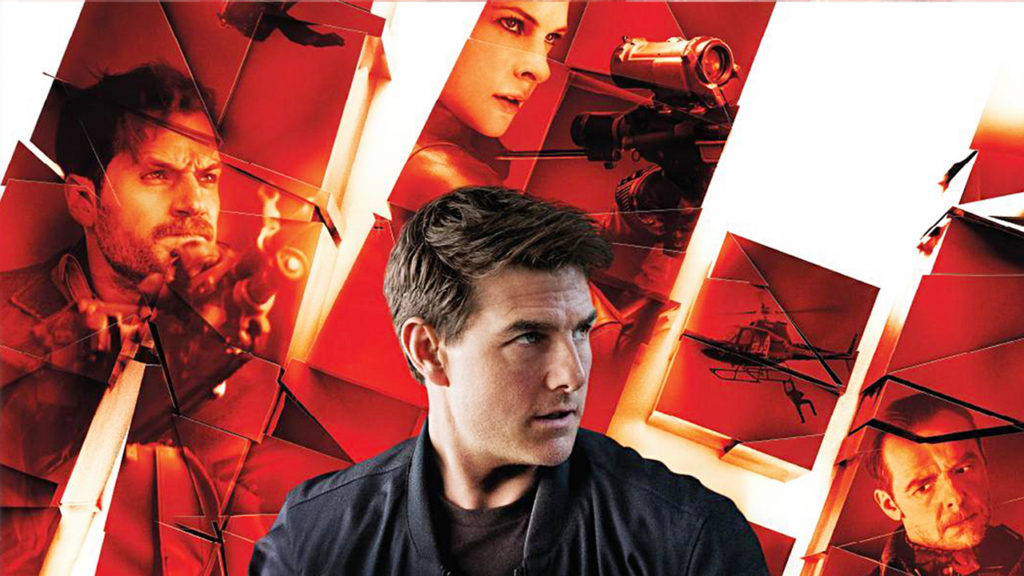Mission: Impossible – Fallout topped the box office this weekend. The marketing was concentrated on partnerships and video—the latter including dramatic stunt work, 360-degree video and, of course, Tom Cruise.
The sixth film in Paramount’s Tom Cruise-led Mission: Impossible franchise earned $61.5 million domestically its opening weekend and another $92 million globally.
Marketing for M: I Fallout focused on spectacle, producing behind-the-scenes footage of the film’s considerable stunt work—especially by 54-year-old Cruise who doesn’t appear to be slowing down any time soon. BMW, the exclusive automotive partner for the franchise since 2011, provided several vehicles and marketing campaigns that highlighted chase scenes and its new M5 model.
Buzz quickly spread about one stunt in particular. The HALO (high altitude, low open) jump required Cruise to jump out of a plane flying 25,000 feet in the air and stop exactly three feet in front of a camera mounted on a skydiver’s head in a very short window of light. According to director Christopher McQuarrie, landing the shot took weeks, ultimately requiring 106 jumps—all while Cruise recovered from a broken ankle.
Paramount also released a 360-degree video that placed viewers inside a helicopter cockpit flown by Cruise. Together with stunt featurettes, audiences were drawn into the high-octane world of Ethan Hunt (Cruise) and his crew as they fight for their lives—with style, of course.
“I think the more you can involve the audience, the better,” Karie Bible, film historian and box office analyst for Exhibitor Relations told AList. “Given the immense popularity of social media and particularly Instagram, audiences want to feel a level of involvement and participation. Films are not just a spectator sport as it were. Audiences (particular younger demographics) like to post and discuss the movie or experience of a movie with their friends. The more they do, the more exposure a film receives.”
Universal leaned on Cruise’s stunt work to promote The Mummy, as well, turning a zero-gravity maneuver into experiential marketing for fans. VR and 360-degree video have become a popular means of film promotion, with studios producing content for Jigsaw, Star Wars: The Last Jedi and The Meg just to name a few.
All those stunts are even bigger on an IMAX screen—26 percent more, in fact. Since M: I Fallout is specially formatted for IMAX theaters, a video spot asked the film’s stars a series of questions based on “26 percent more,” such as “Would you rather be 26 percent stronger or faster?” In addition, a time-lapse video showed how the historic Palais de Chaillot theatre in Paris was transformed into an IMAX theater.
Paramount invested primarily in video content and was one of the first to test Pinterest’s Promoted Video at max width—displaying M: I Fallout videos on users’ home feeds, following tab and in search on mobile devices. A video spot was also produced for ESPN that mashed NBA star James Harden into footage of M: I Fallout before Cruise performs the aforementioned HALO jump.
Of course, every summer blockbuster needs its star, and Paramount knows it can rely on Tom Cruise. The veteran actor boasts nearly 10 million followers between Twitter and Instagram and is active in promoting his latest ventures. In January, Cruise posted, and ostensibly announced, the title of Mission: Impossible Fallout and quickly garnered over 423,000 likes on both platforms.
Cruise may have considerable box office draw—especially in China where the film opens August 31—but star power isn’t enough to ensure a film’s success, noted Bible.
“I think all films need considerable marketing efforts,” she said. “There are so many things competing for attention from streaming services, television, video games, live events, etc. People have so many options that studios have to market heavily to get audience attention.”

